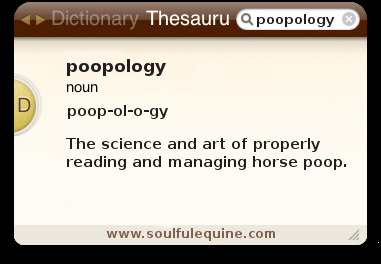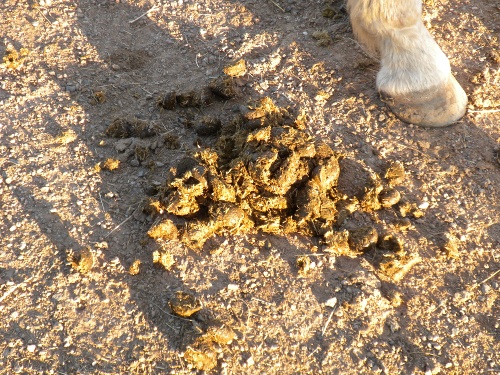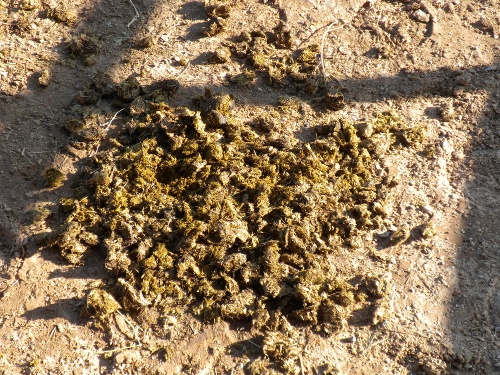
When you got your first horse did you ever think about how much poop she would produce? Many times it’s an afterthought. If you have multiple horses it can add up.
Did you know that a 1,000 lb. horse produces approximately 50 lbs. of manure per day or about 10 tons per year? That’s a lot of poop!
In a previous article I published on how to manage horse manure naturally I introduced you to some powerful manure management strategies. However, management is only one element of horse poopology™.
You’ve probably read many articles and books that talked about the science of horse manure. I think it’s time to take it to an art form … using the term Soulful Equine coined in 2011, called horse poopology.
What the heck is horse poopology? I like to think of it as the skill of properly reading and managing horse poop.
I often say to people that a horse’s hooves are the windows to their bodies, so learning how to read the hoof is essential not only to soundness but to possibly pin-pointing certain health issues. On the other end of the spectrum is another indicator of health – your horse’s poop. This also holds true for you.
Just like properly reading the hoof, you can take it to somewhat of an art form and use the skill of “poop reading” to give you more insight into the health of your equine partner.
I’ve often wondered (not really) if you could become an expert in poopology. I guess if you set your mind to it you can do most anything. I’m not going to claim that I know all the science about horse poop (that would bore you anyway), but I do know what my equine companion’s poop can tell me about their health.
Do You Pay Attention to Your Horse’s Poop?
You’ll often find some equine guardians – those who truly love their horse – poking through their equine partner’s manure. I do it. If the neighbors were watching, they would probably think of you as just another one of those horse nuts.
However, you may be surprised that there are many equine guardians who don’t pay close attention to their horse’s manure. Not only that, they don’t think twice about it.
This is especially true for those who hire others to take care of their equine companion. If you’re one of those people, then you may want to share this article with your horse care taker.
Before learning more about reading poop, the first step is awareness.
So it’s time to start paying attention to horse manure. Not just your horse’s manure, but any horse that comes into your path. Through observation and comparison you’ll be well on your way to becoming a master in pooplology.
What to Notice
As a starting point, here are some simple questions to ask yourself about your equine companion as it relates to her manure:
How often does she poop?
Knowing about how much manure your horse produces in a given day is important. In other words, know what’s normal for her.
I’m not going to say that I know exactly how often each one of my horses poop, but I have an idea of how much I clean up on the track each morning. It doesn’t matter how you gauge it, just do your best to come up with a system.
Your system will depend on your equine partner’s environment and how many horses are in your herd. If you already have a natural boarding track system in place, it makes this task and manure management a breeze.
What’s her “normal” consistency?
I’ve gotten really good at reading the manure in my herd. This may sound strange, but without seeing which horse actually left the pile, I can usually tell which one it came from. Of course, it depends on how fast I get to it since my companions’ manure breaks down so quickly.
The task of observing consistency may be more difficult in a larger herd, but it would be fun to give it a try. Knowing your horse’s normal consistency can help you pin-point possible digestive system problems.
We’ve all probably experienced seeing a horse’s manure not look normal or looking a little bit like a cow patty, which is not a good sign. If this happens, hopefully you’ll be able to easily determine why a change occurred.
For example, it could be a reaction to a new supplement or they may have gotten out unexpectedly into a lush green pasture. Depending on the horse, it can show up as a change in their manure.
Therefore, it’s best to know what’s normal for that horse. Once you determine their “normal,” then you determine if you can improve on it or if it’s giving you indicators that your horse care program needs improvement.
What does the texture look like?
Have you ever seen a horse’s poop look dark like licorice? I have, and it’s not pretty. Funny … only a horse person would say poop is pretty. I do it – do you?
Okay, back to texture. The texture should not look hard, dark or dehydrated. It also should not look like a cow patty once the horse is done pooping. Rather, it should be in somewhat uniform, hydrated balls with a nice green tint to it.
The color variation will depend on the type of forage they’re eating. My horses’ manure usually has a nice green tint to it and the manure balls are soft, hydrated and somewhat round.
How quickly does it break down?
Most people don’t think about this one.
Usually, a little while after I help one of my customers modify their horse keeping practices and feeding program, I ask them to please notice the difference in their horse’s manure.
I usually ask for a report card on horse poop. The feedback I get is that their poop dramatically improves, looks healthier and breaks down very quickly. That’s a good thing. They also tell me their equine partner’s attitude and over all well-being improves.
It’s amazing the results you’ll receive when you focus on implementing the guiding principles of natural horse care.
Soulful Equine Horses’ Poop Pictures
The first picture is somewhat fresh. The lighting isn’t great but you can see the texture and formation.
The second picture is after some of their poop had broken down. This usually happens quickly with my horses, often within 30 minutes.


There’s So Much More to Cover on Horse Poop
Horse poopology involves more than what I shared with you in this article. I realize there are many more things that can be covered such as strategies for reading your equine companion’s poop and how it relates to preventing sand colic. There’s also a lot more to cover from a digestive standpoint.
The main objective of this article is to first and foremost help you become more aware of horse poop along with providing a few pointers on what to look for. I may expand on this subject in future educational materials.
In the meantime, what do you have to share about your experience with horse poopology?
Keep it soulful,
Stephanie Krahl
####
Photo Credit – original photo modified in size and to include the Soulful Equine URL
